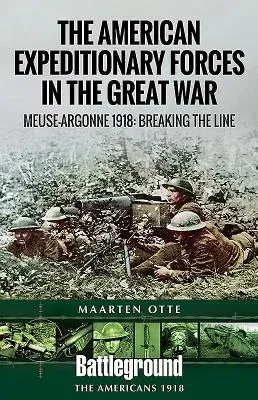Although the Meuse-Argonne Offensive, which began in late September 1918
and continued through to the Armistice, was not the first major action
fought by the AEF, it was the greatest in which it engaged in the Great
War. Indeed, the casualty count in the fighting at the Meuse-Argonne
makes it the bloodiest battle in American military history.
The Argonne was an area that had been heavily fought over, particularly
in the early part of the war; its eastern part, towards the Meuse, then
became enveloped in the first great attritional battle of the war,
Verdun. The area is marked by extensive woodlands and rolling
countryside; however, unlike the Somme, it is interspersed with numerous
waterways, deep ravines and higher ridges, along with significant hills,
such as at Montfaucon.
To be frank, the opening stages of the Offensive were marked by
considerable unforced difficulties for the Americans, who after all were
facing a far from strong enemy opposition (however formidable the
defensive line might have been). Errors were made, logistical problems
multiplied, command was often less than satisfactory. In many respects
this should not have come as a surprise: this was an army that was
relatively new to the Western Front, which was being reinforced at an
awesome rate (approximately 300,000 men a month by July) and whose
senior commanders had never before faced the challenges of modern
warfare, themselves evolving at a dizzying rate.
Maarten Otte gives a background narrative to events before the opening
of the Offensive and its development. Taking each of the US corps in
turn, he then provides tours that will help the visitor to understand
the fighting and the problems that were faced. This opening book on the
Meuse-Argonne takes the reader, more or less, to the date when General
Pershing handed over command of the US First Army to Major General
Liggard in mid October, a change in command that marked a significant
improvement in the American performance as they pushed the Germans ever
backwards.
The Great War battlefield of the Argonne is marked by numerous physical
remains of the war, some fine (some might argue over grandiose)
monuments and by the stunning American cemetery at Romagne, the second
largest in the world administered by the American Battle Monuments
Commission. There is much to see in a battlefield that has been largely
neglected in the decades since the Second World War.

